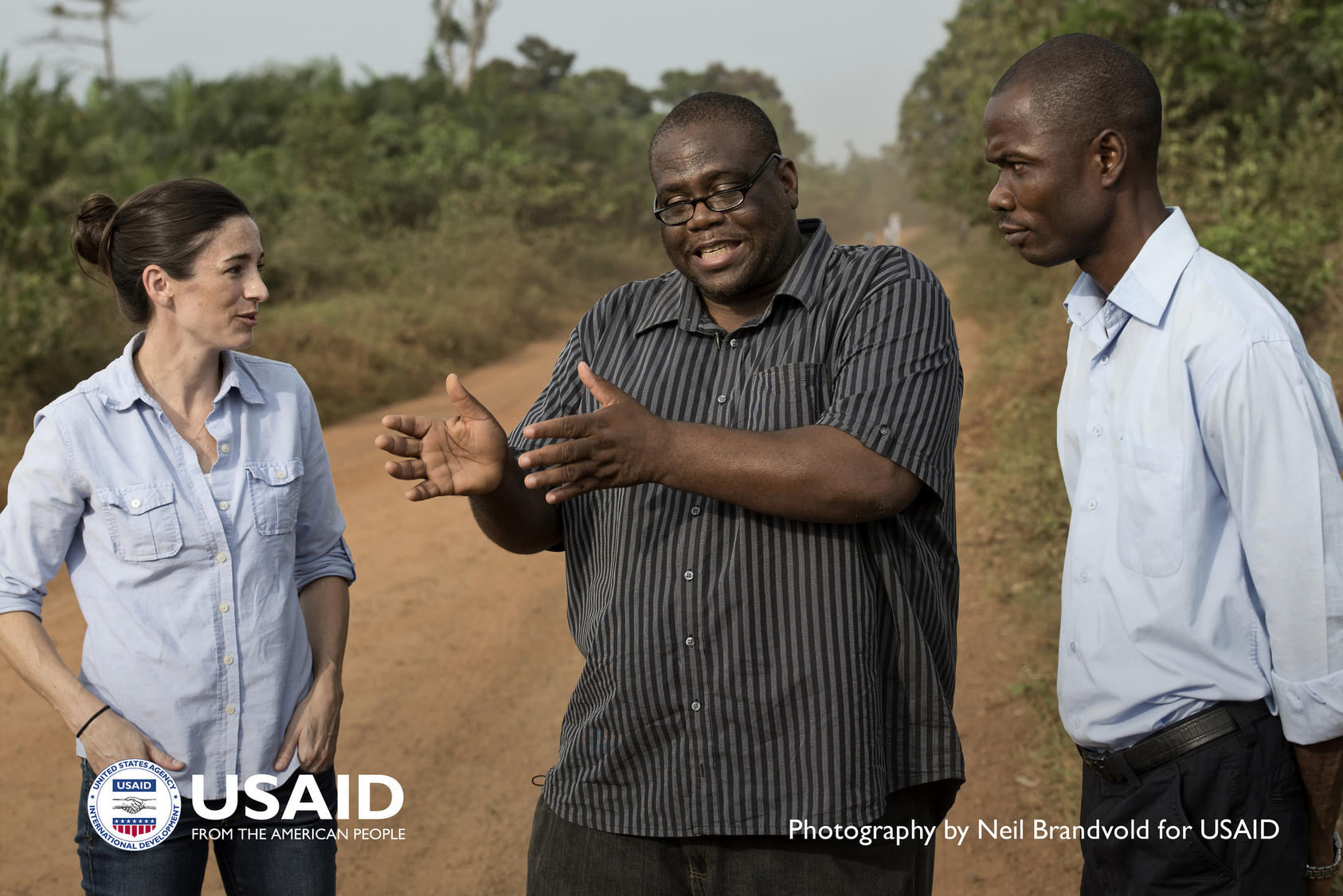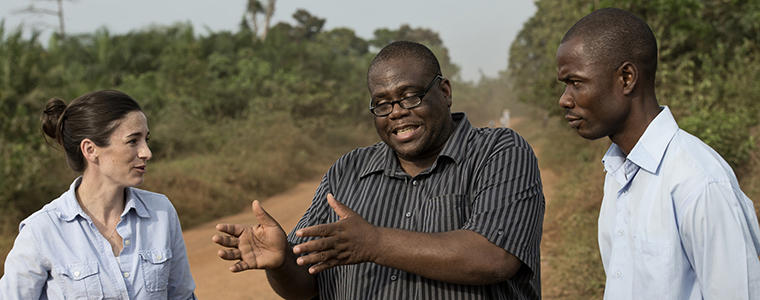State Department Official Cites Better Security, Inevitable Peril
The U.S. State Department, searching for the balance between carrying out its missions overseas and minimizing the risk in high-threat environments, has rolled out an array of programs and policies to help diplomats and aid workers in high-threat environments, Deputy Secretary of State Heather Higginbottom said at the U.S. Institute of Peace. She spoke last week, before today’s release of a congressional report from a probe of the 2012 attacks in Benghazi, Libya, that killed four American civilian personnel, including U.S. Ambassador Christopher Stevens.

“Leaders must accept that some danger will always be present if we want to be part of the world.” – U.S. Deputy Secretary of State Heather Higginbottom
Threats facing “frontline civilians” may be evolving, Higginbottom said, but they are neither new nor insurmountable. The new initiatives focus on staff care, training and strategy as well as physical security, said Higginbottom, the department’s top official for management and resources.
The alternative is for diplomats to remain isolated from local environments—and consequently less effective, “trapped in a bubble of eternal operational now,” Rebecca Zimmerman, a policy analyst with the Rand Corporation, said in a panel discussion following Higginbottom’s address.
“Leaders must accept that some danger will always be present if we want to be part of the world,” said Higginbottom.
Higginbottom’s remarks last week came in the last of three discussions held at USIP and co-hosted with the U.S. Advisory Commission for Public Diplomacy, the Truman National Security Project and the McCain Institute for International Leadership. The events examined risk as it affects U.S. government civilians in conflict zones and fragile states.
The blueprint called for addressing the growing dangers faced by diplomats and aid workers while stressing that the American public needs to accept a higher risk-tolerance for its frontline civilians.
In introducing Higginbottom, Doug Wilson, a senior fellow and chairman of the board of advisors at Truman, quoted comments by Stevens’s father that addressed the risks his son had taken in Libya: “Chris would not have wanted to be remembered as a victim. He knew and accepted that he was working under dangerous circumstances. He did so as so many diplomats and development professionals do every day.”
Benghazi Attacks Studied for Lessons
Higginbottom, who said analysis of the Benghazi affair informed the department’s moves, described trying to solve a “three-dimensional puzzle” that involves monitoring threats, mitigating risks and staying engaged on the ground.
The report issued today from the House Select Committee on Investigations criticized the Defense Department, the Central Intelligence Agency and the State Department for underestimating the security risks in Benghazi and maintaining facilities they could not protect, according to the New York Times.
Separately, Higginbottom said last week that, after the State Department’s 2015 Quadrennial Diplomacy and Development Review, officials identified innovations and policies for high-threat environments, setting six priorities ranging from adapting aid programs to shifting security situations to how diplomats can physically move around in conflict zones. A mechanism was established to understand better which posts face the greatest threats, and to make sure they get priority in meeting security needs. Hands-on training for high-threat posts has intensified, as have efforts to draw lessons from the field more systematically, she said.
Strategies have included cutting U.S. personnel in Cairo by 20 percent by simply moving out some administrative functions, and re-establishing a significant diplomatic presence in Somalia with a phased approach to help reduce risk, she said.
The next stage must to offer better care to the people who take the risks and their families, Higginbottom said. That includes expanding the current access to peer and mental health support and dispelling fear that seeking help could jeopardize career prospects or security clearances, she said.
The risk profile for aid workers today is captured in a single statistic, said Thomas Staal, a senior deputy assistant administrator at the U.S. Agency for International Development (USAID). A decade ago, 80 percent of spending on humanitarian needs went to recovery from natural disasters, and 20 percent to addressing the results of violent conflict; the ratio today is reversed, meaning aid workers are more likely to be targets or caught up in violence, Staal said.
Surge in Attacks Against Aid Workers
Attacks against aid workers funded by USAID surged to 190 in 2014 from 63 in 2004, according to the agency. The number killed jumped to 121 in 2014 from 56 in 2003.
“We are struggling with the impact on our staff,” Staal said. “When you can no longer bring family, it makes finding people to do the work harder and it affects the length of time they want to stay,” Staal said.
The agency’s responses have included offering professional help to deal with trauma and promote staff resilience in 30 countries, improving communication with local forces who might be hostile to U.S. efforts, a wider threat-monitoring and evaluation program and stepped up security training for U.S. and local staff, he said. The agency also makes more use of newer technologies such as texting and Skype to keep in touch with local partners.
But, Staal said, “there is no substitute for direct interaction, dialogue and communication.”
Staying behind walls limits diplomats’ ability to influence people on the ground around them and to give policymakers in Washington the kind of textured information they need for good decisions, said John Mongan, deputy director of the State Department’s Office of Near Eastern Affairs in the Bureau of Conflict Stabilization Operations.
In any case, committed aid workers and diplomats don’t want to operate in isolation, said Stacia George, deputy director for the Office of Transition Initiatives at USAID. Pushing them toward absolute safety makes it harder to recruit for difficult missions, she said. Just as there are physical risks to operating in a conflict zone or fragile state, isolation creates the danger of missing critical opportunities, she said, citing her experience in Pakistan. George said she ignored the conventional wisdom that nothing could be done safely from Peshawar, a city in northwestern Pakistan in an area affected by militant violence. She found not only that there were people on the ground she could work with but that a “majority was on our side.”
“There are many dangerous neighborhoods in the U.S. where we provide incentives to teachers and social workers to go,” she said. “People can understand this is not so different.”
Risks Shift to NGOs
Non-government organizations (NGO’s) face a slightly different challenge linked to duty of care, said Jim LeBlanc, a member of the board of the International NGO Safety and Security Association. Tighter restrictions on U.S. personnel have shifted risk onto development workers for NGOs, he said. At the same time, a $500,000 judgment against the Norwegian Refugee Council, won in November by an employee kidnapped in Kenya, is sending shock waves through the NGO world, he said. An Oslo court agreed with the worker’s claims that the NRC committed gross negligence and failed to meet its duty of care, in part because it wrongly assessed the risks to its staff.
“The case laid bare the lack of training,” LeBlanc said. “NGOs are behind the curve on duty of care.” The NGO safety group has created a program on risk analysis and mitigation that certifies managers’ skill and capability in the area, he said.
Training for U.S. employees has come a long way since he was “running around in overalls in the farm fields of Virginia with flashpots going off” before deploying to Iraq for USIP, said Rusty Barber, the institute’s director of program development and operations. There was no training about situational awareness or how to handle the stresses of a high-threat environment or other preparation that might have been useful, he said. That has improved, along with a far greater recognition of the need for mental health support for civilian veterans of high-threat situations, Barber said.
Asked by moderator Michael Crowley of Politico what Congress might ideally do in a State Department reauthorization bill—the first in more than 10 years—Mongan of the department’s stabilization bureau zeroed in on the Accountability Review Board, a panel that by law must investigate the death of any American killed under the chief of mission’s authority.
“When you call it an ‘Accountability Review Board,’ you’re saying the only way somebody gets killed is if somebody screwed up,” said Mongan, who has worked in Afghanistan and in Turkey supporting the Syrian opposition. “You might as well call it a witch hunt. It creates no incentive for anyone to take a little risk because the downside of a casualty—and we’re casualties, not victims—are just too great.”
Make it a lessons-learned investigation, he said. And don’t forget to look at posts where no one was killed in places that are “crazy dangerous” to learn from success as well, he added.
